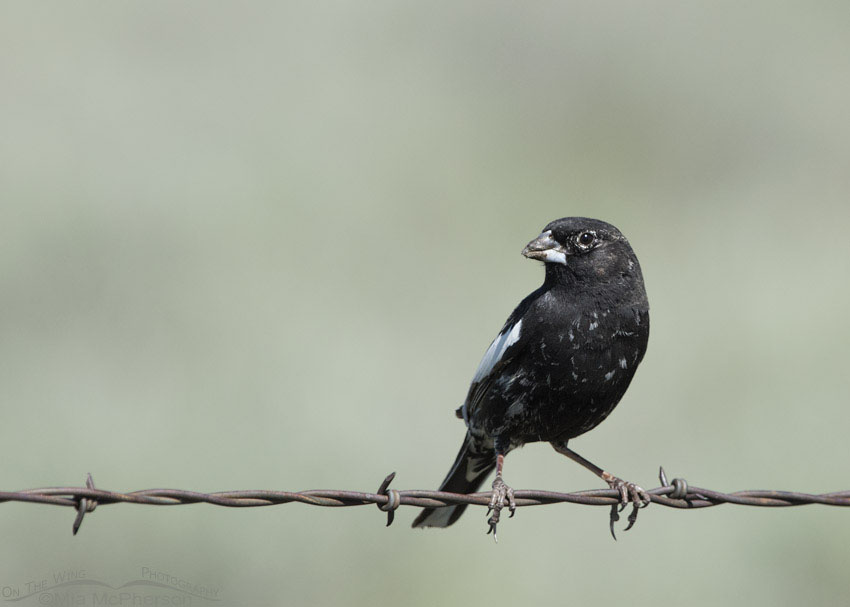
Lark Bunting Images, Facts and Information:
Calamospiza melanocorys
- Lark Buntings are large sparrows. Adult males in breeding plumage are nearly all black with white wing patches, white edged tails and have heavy blue-gray bills. In nonbreeding plumage they have streaked gray-brown upperparts, streaked brown underparts, white wing patches, black throats, and white edged tails. Females and juveniles are duller and do not have black throats.
- Lark Buntings are migratory. They breed on the prairies of south-central Canada the the central U.S. from Saskatchewan south to northern Texas. Lark Buntings spend the winter in southwest states and northern Mexico.
- Lark Buntings prefer shortgrass prairies, open areas, and sagebrush flat habitats.
- Lark Buntings feed on beetles, ants, grasshoppers, seeds and grains.
- Lark Buntings lay 3 to 7 eggs which hatch in 11 to 12 days. The females incubate and they are primarily monogamous, some are polygynous.
- A group of buntings can be called a “decoration” or “mural” of buntings.
- Lark Buntings can live to be more than four years of age.
I hope you enjoy viewing my Lark Bunting photos.
Mia McPherson
Male Lark Bunting in the Centennial Valley of Montana
Title: Male Lark Bunting in the Centennial Valley of Montana
Location: Centennial Valley, Beaverhead County, Montana
Date: 06/04/2016
Mia McPherson
Fluffed up male Lark Bunting in Montana
Title: Fluffed up male Lark Bunting in Montana
Location: Centennial Valley, Beaverhead County, Montana
Date: 06/04/2016
Mia McPherson
Female Lark Bunting
Title: Female Lark Bunting
Location: Red Rock Lakes National Wildlife Refuge, Centennial Valley, Beaverhead County, Montana
Date: 6/15/2011



